Here’s what the editors of Physician’s Briefing have picked as the most important COVID-19 developments for you and your practice for the week of January 24-28, 2022. This roundup includes the latest research news from studies from journals and other reliable sources that are likely to affect clinical practice.
Three doses of mRNA vaccine protecting against Delta, Omicron
FRIDAY, Jan. 28, 2022 (HealthDay News) — Receiving three doses of a COVID-19 mRNA vaccine is associated with protection against delta and omicron compared to not being vaccinated and receiving of two doses, according to a study published online on January 28, 2022. 21 in the Journal of the American Medical Association.
Neutralization titers against Omicron Up with mRNA-1273 Boost
FRIDAY, Jan. 28, 2022 (HealthDay News) — Neutralization titers against the omicron variant are lower than those against the D614G variant after the first two-dose series of the mRNA-1273 vaccine, but a booster dose of the mRNA-1273 vaccine significantly increases them, according to a letter to the editor published online Jan. 26 in the New England Journal of Medicine.
Remdesivir may benefit adults early in COVID-19 course
FRIDAY, Jan. 28, 2022 (HealthDay News) — Hospitalized COVID-19 patients not receiving oxygen or low-flow oxygen were more likely to achieve clinical improvement within 28 days if treated with remdesivir , according to a study published online in December 15 in Clinical infectious diseases.
Thrombosis, thrombocytopenia syndrome after Ad26.COV2.S
FRIDAY, Jan. 28, 2022 (HealthDay News) — Rate of thrombosis with thrombocytopenia syndrome higher after receiving Ad26.COV2.S vaccine than mRNA-based COVID-19 vaccines, according to published case series online January 28, 2022. 18 in the Annals of Internal Medicine.
Third mRNA vaccine increases efficacy against hospitalization
THURSDAY, Jan. 27, 2022 (HealthDay News) — Receiving a third dose of the COVID-19 mRNA vaccine is associated with increased vaccine efficacy against COVID-19 hospitalization, according to a study published in the 28 issue. January from the Centers for US Centers for Disease Control and Prevention Morbidity and Mortality Weekly Report.
Moderna begins testing Booster Shot for Omicron
THURSDAY, Jan. 27, 2022 (HealthDay News) — Moderna Inc. announced Wednesday that it has launched a trial that will study the potency of a redesigned booster — one that focuses on the highly contagious omicron variant.
Scientists watch and worry about new ‘stealth’ version of Omicron variant
THURSDAY, Jan. 27, 2022 (HealthDay News) — A “stealthier” version of the omicron variant that has been spotted in the United States and dozens of other countries is being closely watched by health officials and scientists.
Hospital defends decision to deny heart transplant to unvaccinated man
THURSDAY, Jan. 27, 2022 (HealthDay News) — Responding to allegations that a man was denied a heart transplant because he refused to be vaccinated against COVID-19, Brigham and Women’s Hospital in Boston said Wednesday that its transplant policies mirrored those used across the United States.
Omicron linked to rise in COVID-19 cases and reduction in disease severity
THURSDAY, Jan. 27, 2022 (HealthDay News) — COVID-19 cases have increased with the emergence of the omicron variant, but disease severity does not appear to have increased, according to a study published in the Jan. 25 issue of the United States Centers for Disease Control and Prevention Morbidity and Mortality Weekly Report.
Gut microbiome alterations identified in postacute COVID-19 syndrome
THURSDAY, Jan. 27, 2022 (HealthDay News) — Patients with postacute COVID-19 syndrome show alterations in the gut microbiome, according to a study published online Jan. 25 in Intestine.
Vaccination against COVID-19 is not linked to fertility in men and women
THURSDAY, Jan. 27, 2022 (HealthDay News) — COVID-19 vaccination not associated with fertility in couples trying to conceive, according to a study published online Jan. 20 in the American Journal of Epidemiology.
Carditis risk linked to the second dose of the Pfizer-BioNTech COVID-19 vaccine
THURSDAY, Jan. 27, 2022 (HealthDay News) — Despite a low absolute risk, there is an increased relative risk of carditis associated with the BNT162b2 vaccination (Pfizer-BioNTech), particularly in men and adolescents, according to a study published online. 25 in the Annals of Internal Medicine.
~7% of lung transplants due to COVID-19 respiratory failure
WEDNESDAY, Jan. 26, 2022 (HealthDay News) — From August 2020 to September 2021, about 7% of lung transplants were performed in patients with COVID-19-related respiratory failure, according to a published letter to the editor. online January 26, 2020. 26 in the New England Journal of Medicine.
Booster injections are more effective during the emergence period of Omicron
WEDNESDAY, Jan. 26, 2022 (HealthDay News) — Booster doses appear effective for the 2 omicron variant of the severe acute respiratory syndrome coronavirus, according to a study published in the January 21 advance publication issue of the Centers for Disease Control and Prevention. the United States Morbidity and Mortality Weekly Report.
More than a million American children diagnosed with COVID-19 in a single week
WEDNESDAY, Jan. 26, 2022 (HealthDay News) — More than 1.1 million American children were diagnosed with COVID-19 in the week ending Jan. 20, according to new data. This is 17% more than the 981,000 cases diagnosed the previous week and double the number two weeks before.
Biden administration withdraws vaccination mandate for large employers
WEDNESDAY, Jan. 26, 2022 (HealthDay News) — The Biden administration on Tuesday withdrew an emergency COVID-19 vaccine or testing mandate for workers at large corporations following the recent U.S. Supreme Court ruling against this requirement.
Casirivimab + imdevimab prevent progression to symptomatic COVID-19
WEDNESDAY, Jan. 26, 2022 (HealthDay News) — For asymptomatic people with asymptomatic severe acute respiratory syndrome coronavirus polymerase chain reaction living with an infected household contact, treatment with the subcutaneous antibody combination casirivimab and imdevimab reduces the incidence of symptomatic COVID-19. 19 out of 28 days, according to a study published online Jan. 14 in the Journal of the American Medical Association.
Reduction in children’s hospital admissions after March 2020
WEDNESDAY, Jan. 26, 2022 (HealthDay News) — Substantial and lasting reductions in hospital admissions were seen in children after March 1, 2020, according to a study published online Jan. 12 in The BMJ.
Pfizer begins testing COVID-19 vaccine targeting Omicron
TUESDAY, Jan. 25, 2022 (HealthDay News) — Pfizer Inc. announced Tuesday that it has launched a trial that will compare its existing COVID-19 vaccine to a new version designed to fend off the highly contagious omicron variant.
Omicron shows signs of decline as US cases plummet and hospitalizations stabilize
TUESDAY, Jan. 25, 2022 (HealthDay News) — Weeks after omicron began ravaging the United States, experts are now seeing statistical signs suggesting the highly contagious variant may be losing steam.
EU eases COVID-19 travel rules within bloc for fully vaccinated people
TUESDAY, January 25, 2022 (HealthDay News) — Residents of the European Union should be able to move freely between the 27 member countries if they have been vaccinated in the past nine months or have recently recovered from an infection to COVID-19, bloc officials said. Tuesday.
Free N95 masks are starting to arrive at US pharmacies
TUESDAY, Jan. 25, 2022 (HealthDay News) — The distribution of free N95 masks for Americans has begun, the Biden administration announced Monday.
FDA limits use of two COVID-19 antibody treatments
TUESDAY, Jan. 25, 2022 (HealthDay News) — The U.S. Food and Drug Administration said Monday it would reduce the use of two monoclonal antibody treatments that don’t appear to work against the highly contagious omicron variant.
No evidence of malignant and sustained arrhythmias seen after COVID-19
TUESDAY, Jan. 25, 2022 (HealthDay News) — For outpatients after a positive diagnosis of COVID-19, there is no evidence of malignant or sustained arrhythmias, according to a study published online Jan. 20 in Open heart.
England to lift travel restrictions for vaccinated visitors
MONDAY, Jan. 24, 2022 (HealthDay News) — COVID-19 testing requirements for vaccinated people arriving in England will be scrapped, British Prime Minister Boris Johnson announced Monday. Details of the changes are to be provided later today by Transport Secretary Grant Shapps, the Associated press reported.
Vaccination, previous infection Protect yourself against COVID-19
MONDAY, Jan. 24, 2022 (HealthDay News) — Vaccination and previous COVID-19 infection protected against COVID-19 infection and hospitalization during alpha and delta waves of severe acute respiratory syndrome coronavirus 2, according to a study published in the January issue. 19 advance edition of the United States Centers for Disease Control and Prevention Morbidity and Mortality Weekly Report.
A pandemic having a major impact on pediatric oncology providers
MONDAY, Jan. 24, 2022 (HealthDay News) — The COVID-19 pandemic is having a profound impact on pediatric oncology healthcare providers, according to a study published online Jan. 24 in Cancer.
Ad26.COV2.S, immunogenic mRNA boosters after Ad26.COV2.S
MONDAY, Jan. 24, 2022 (HealthDay News) — For healthcare workers who received a priming dose of the Ad26.COV2.S vaccine, Ad26.COV2.S and mRNA boosters are immunogenic, with the most stronger after a booster with an mRNA-based vaccine, according to a study published online January 19 in the New England Journal of Medicine.
 North Carolina ERs reported hundreds of visits for gastrointestinal illnesses such as diarrhea, vomiting and abdominal pain in the weeks during and after Hurricanes Florence in 2018 and Matthew in 2016. A new study published last month in the journal Science of the Total Environment found an 11% increase in emergency room visits during both […]]]>
North Carolina ERs reported hundreds of visits for gastrointestinal illnesses such as diarrhea, vomiting and abdominal pain in the weeks during and after Hurricanes Florence in 2018 and Matthew in 2016. A new study published last month in the journal Science of the Total Environment found an 11% increase in emergency room visits during both […]]]> By LISA RATHKE, Associated Press The Peace Corps will resume sending volunteers overseas in mid-March after evacuating them from posts around the world two years ago due to the COVID-19 pandemic, the U.S. government program announced Thursday. An initial group of new volunteers and those who were evacuated in March 2020 as the coronavirus began […]]]>
By LISA RATHKE, Associated Press The Peace Corps will resume sending volunteers overseas in mid-March after evacuating them from posts around the world two years ago due to the COVID-19 pandemic, the U.S. government program announced Thursday. An initial group of new volunteers and those who were evacuated in March 2020 as the coronavirus began […]]]> Fifteen Nunavut communities will be placed under less restrictive public health measures starting Monday as their number of COVID-19 cases decline. Chief Public Health Officer Dr. Michael Patterson announced the changes Tuesday morning during a virtual COVID-19 press conference. Sanitary measures are relaxed in Arviat, Baker Lake, Chesterfield Inlet, Clyde River, Gjoa Haven, Grise Fjord, […]]]>
Fifteen Nunavut communities will be placed under less restrictive public health measures starting Monday as their number of COVID-19 cases decline. Chief Public Health Officer Dr. Michael Patterson announced the changes Tuesday morning during a virtual COVID-19 press conference. Sanitary measures are relaxed in Arviat, Baker Lake, Chesterfield Inlet, Clyde River, Gjoa Haven, Grise Fjord, […]]]>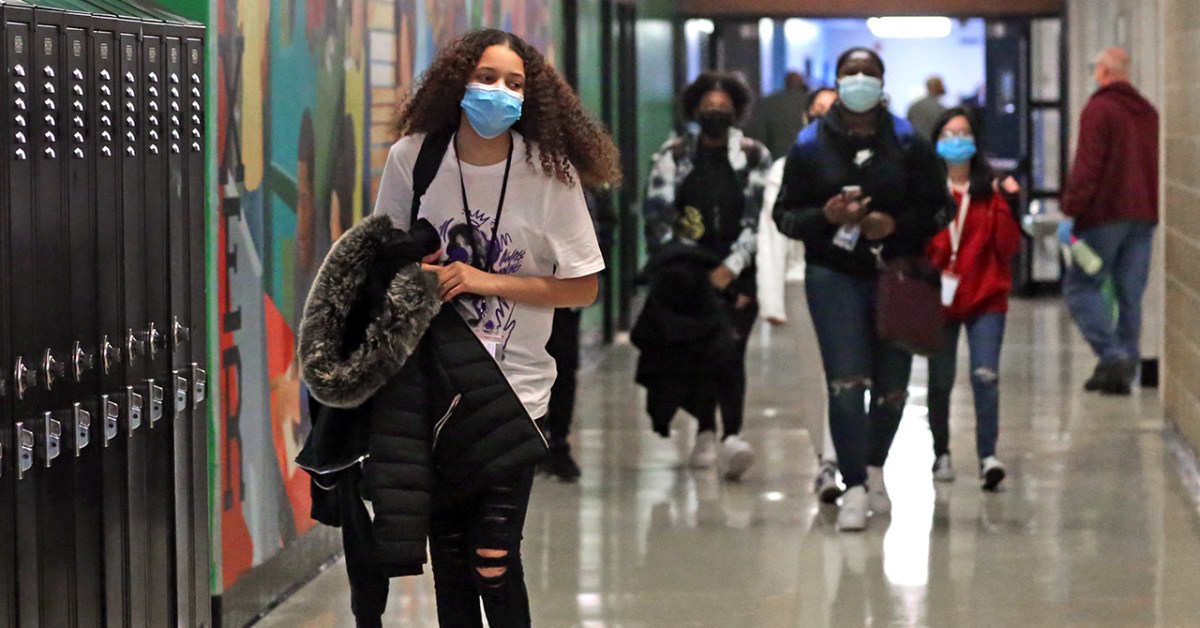 Students walk to class through the once crowded hallways of Brockton High School in Brockton, Massachusetts, in March 2021. (David L. Ryan/The Boston Globe via Getty Images) Amid a wave of COVID-19 cases due to omicron variant, a slim majority of parents of K-12 students (53%) say schools in the United States should offer a […]]]>
Students walk to class through the once crowded hallways of Brockton High School in Brockton, Massachusetts, in March 2021. (David L. Ryan/The Boston Globe via Getty Images) Amid a wave of COVID-19 cases due to omicron variant, a slim majority of parents of K-12 students (53%) say schools in the United States should offer a […]]]>




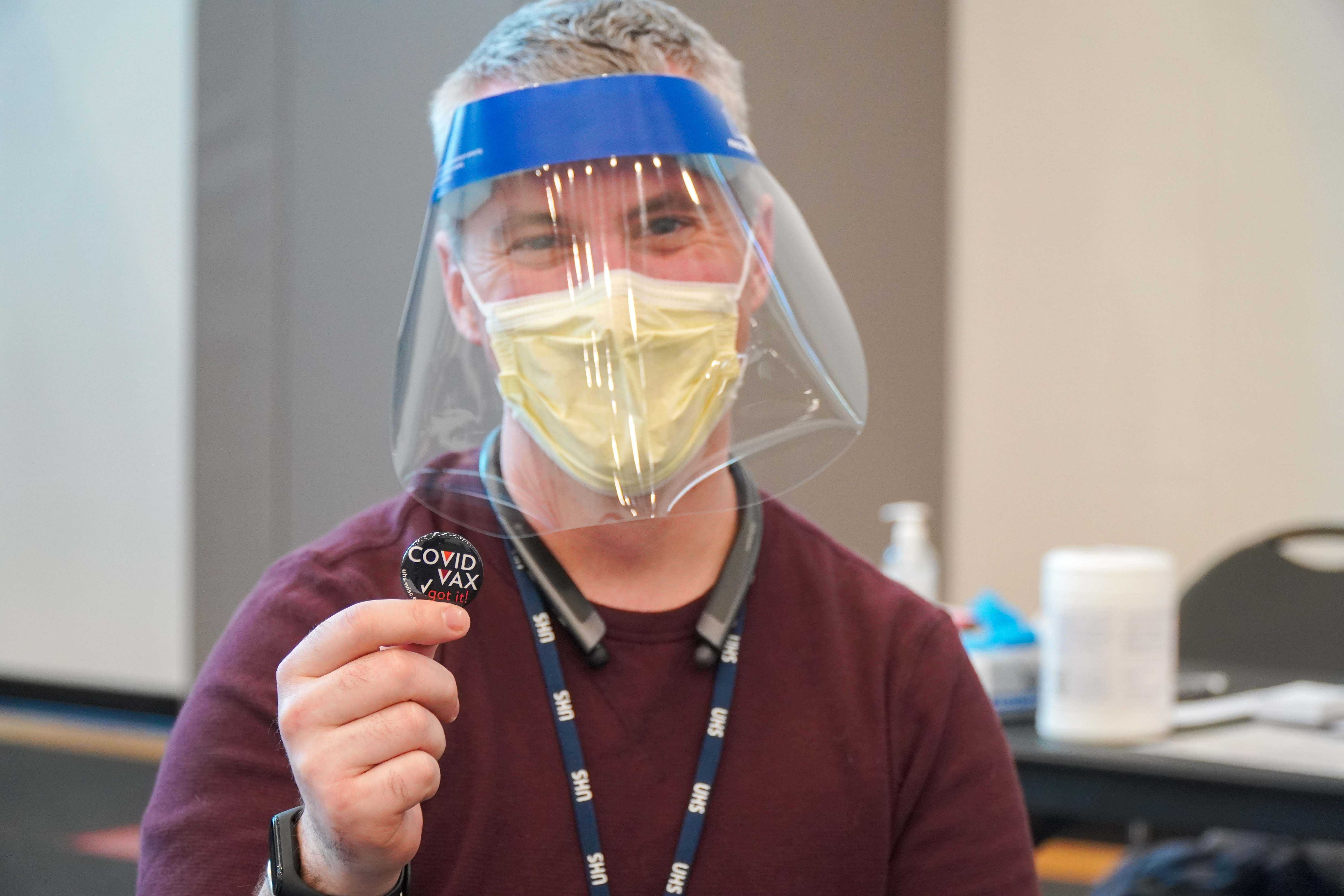 University Health Services is working with University of Wisconsin Health to encourage the UW and Madison community to get vaccinated as Omicron cases increase and students return to in-person classes. In 2021, the Wisconsin Department of Health Services designated UW Health the “regional distribution center” for vaccine distribution as Pfizer vaccine doses became more available […]]]>
University Health Services is working with University of Wisconsin Health to encourage the UW and Madison community to get vaccinated as Omicron cases increase and students return to in-person classes. In 2021, the Wisconsin Department of Health Services designated UW Health the “regional distribution center” for vaccine distribution as Pfizer vaccine doses became more available […]]]> Here’s what the editors of Physician’s Briefing have picked as the most important COVID-19 developments for you and your practice for the week of January 24-28, 2022. This roundup includes the latest research news from studies from journals and other reliable sources that are likely to affect clinical practice. Three doses of mRNA vaccine protecting […]]]>
Here’s what the editors of Physician’s Briefing have picked as the most important COVID-19 developments for you and your practice for the week of January 24-28, 2022. This roundup includes the latest research news from studies from journals and other reliable sources that are likely to affect clinical practice. Three doses of mRNA vaccine protecting […]]]> Oswego County opens online portal to report positive COVID-19 home test results OSWEGO COUNTY — Residents of Oswego County can now self-report positive COVID-19 home test results and COVID-19 exposures, and request isolation and quarantine documents through an online portal. The portal generates isolation and quarantine orders and release documents which are sent to the […]]]>
Oswego County opens online portal to report positive COVID-19 home test results OSWEGO COUNTY — Residents of Oswego County can now self-report positive COVID-19 home test results and COVID-19 exposures, and request isolation and quarantine documents through an online portal. The portal generates isolation and quarantine orders and release documents which are sent to the […]]]>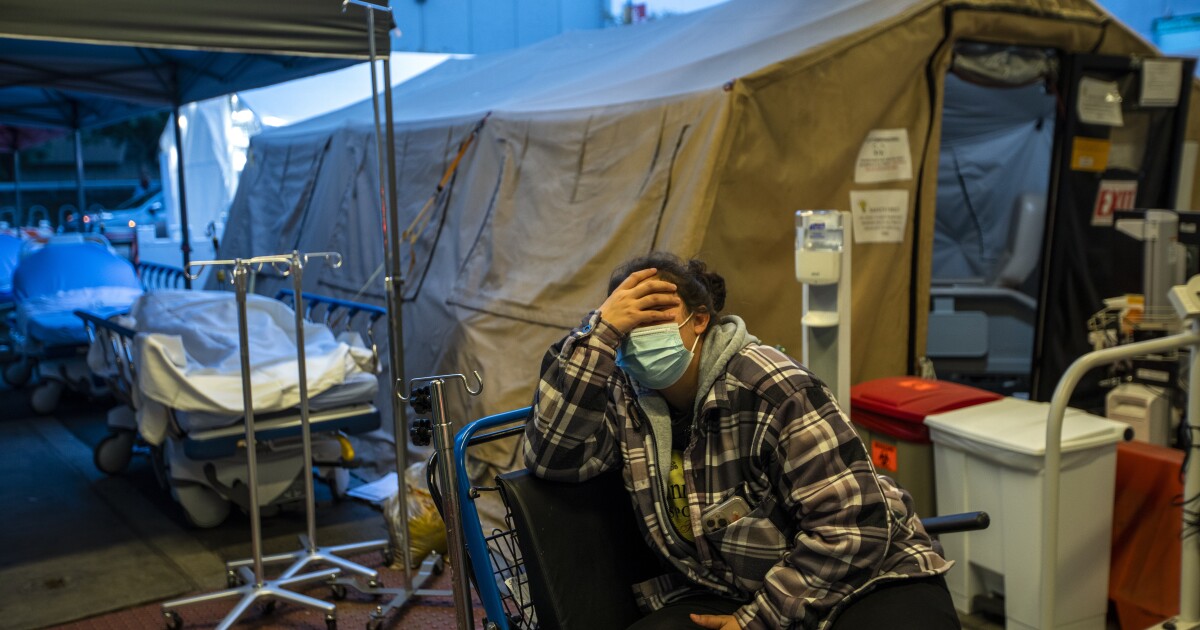 A man with painfully swollen legs from congestive heart failure lies on a stretcher outside the emergency room, staring at a leaden sky that threatens rain. A woman helps her husband in a triage tent, after his dialysis center refused to admit him after a positive coronavirus test. Arriving at the emergency department at Martin […]]]>
A man with painfully swollen legs from congestive heart failure lies on a stretcher outside the emergency room, staring at a leaden sky that threatens rain. A woman helps her husband in a triage tent, after his dialysis center refused to admit him after a positive coronavirus test. Arriving at the emergency department at Martin […]]]>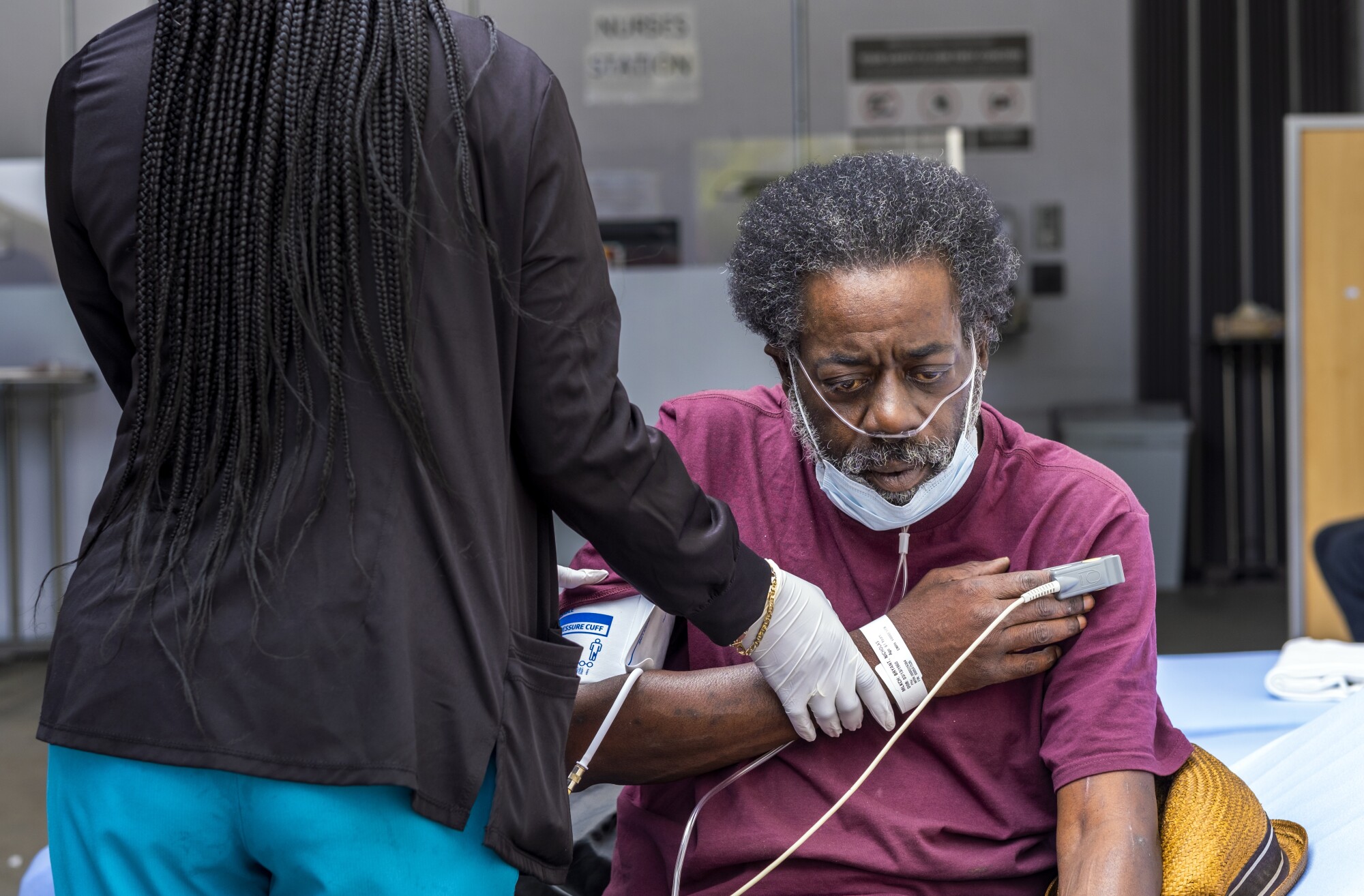

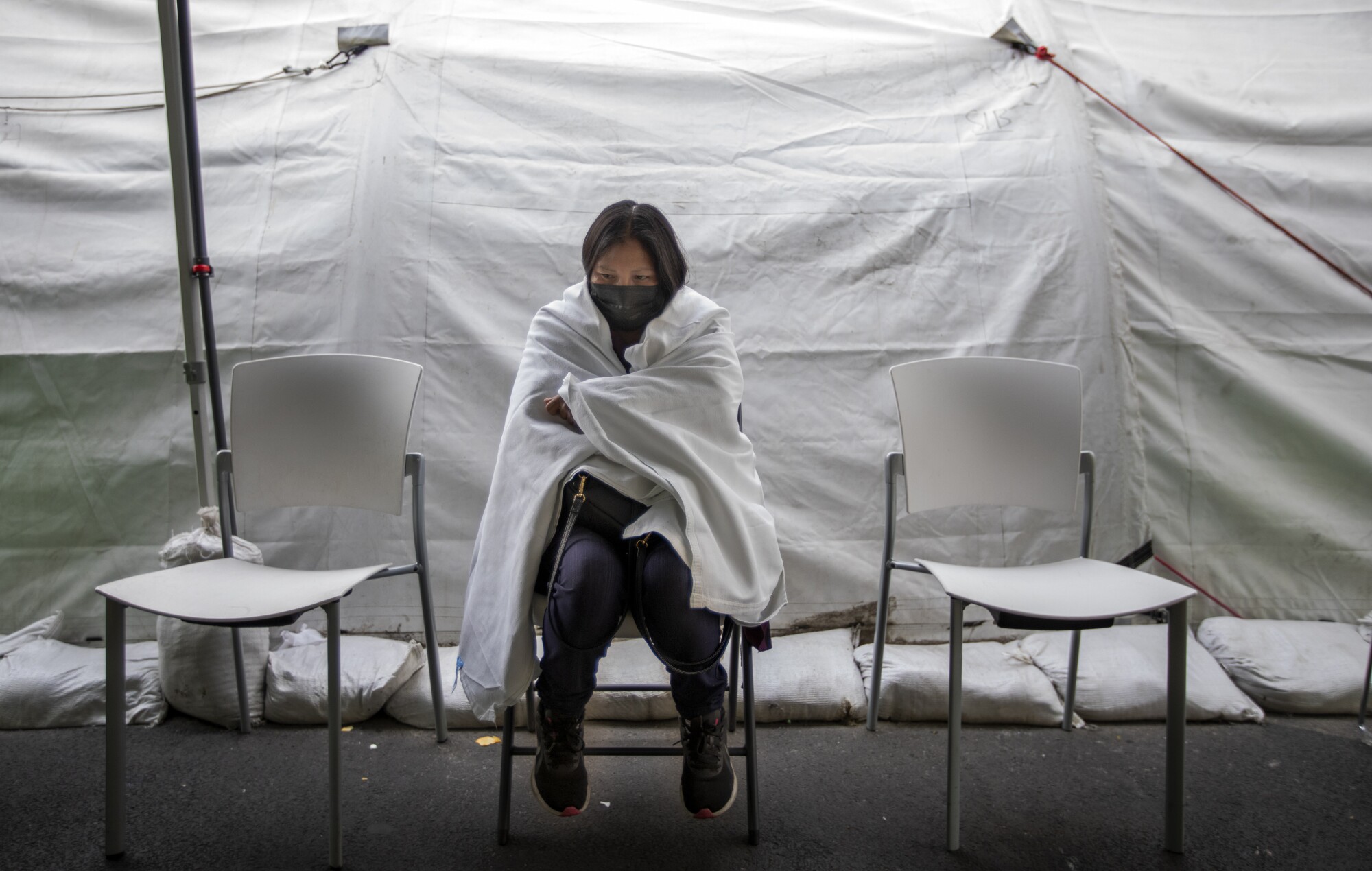
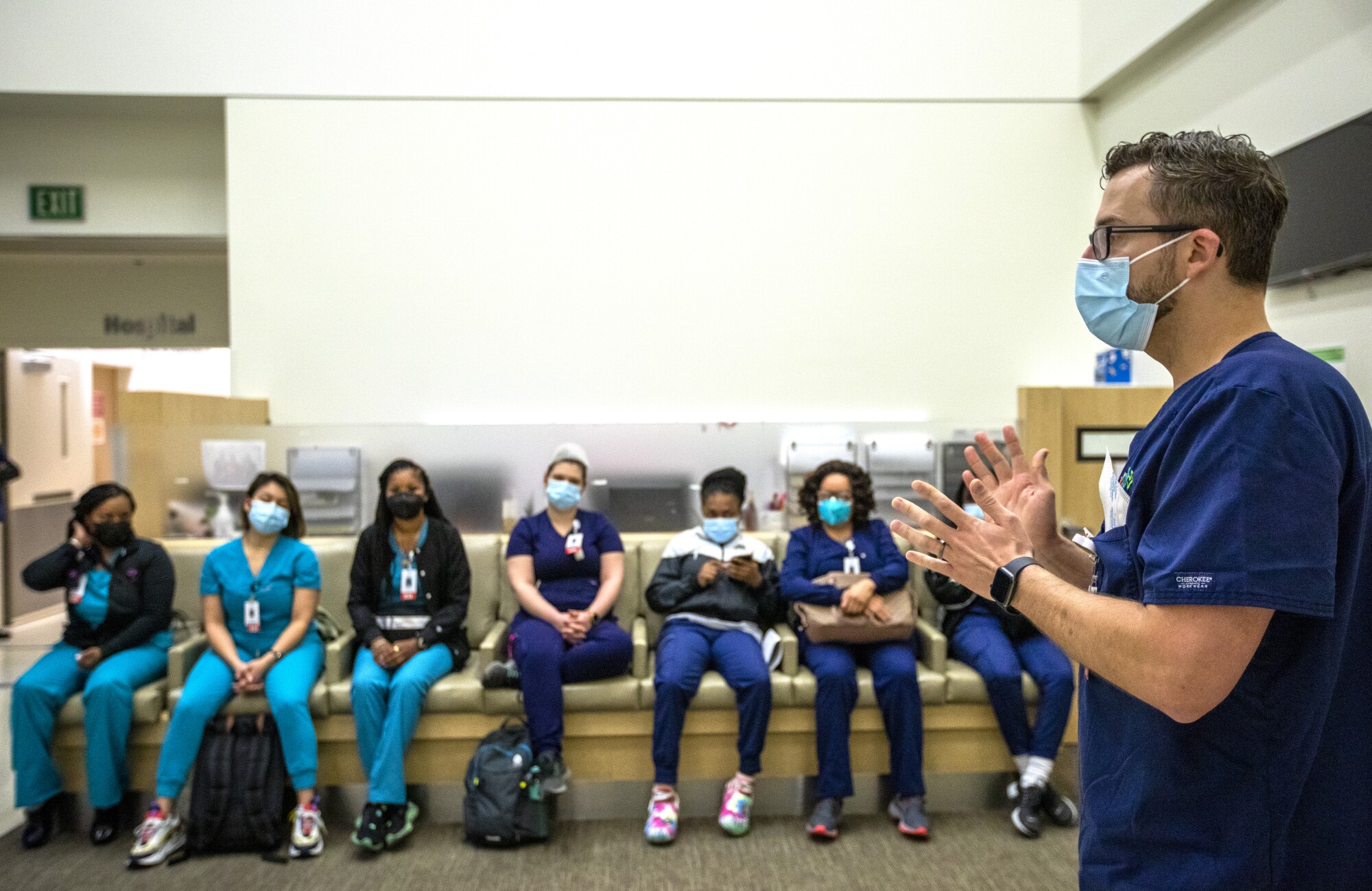
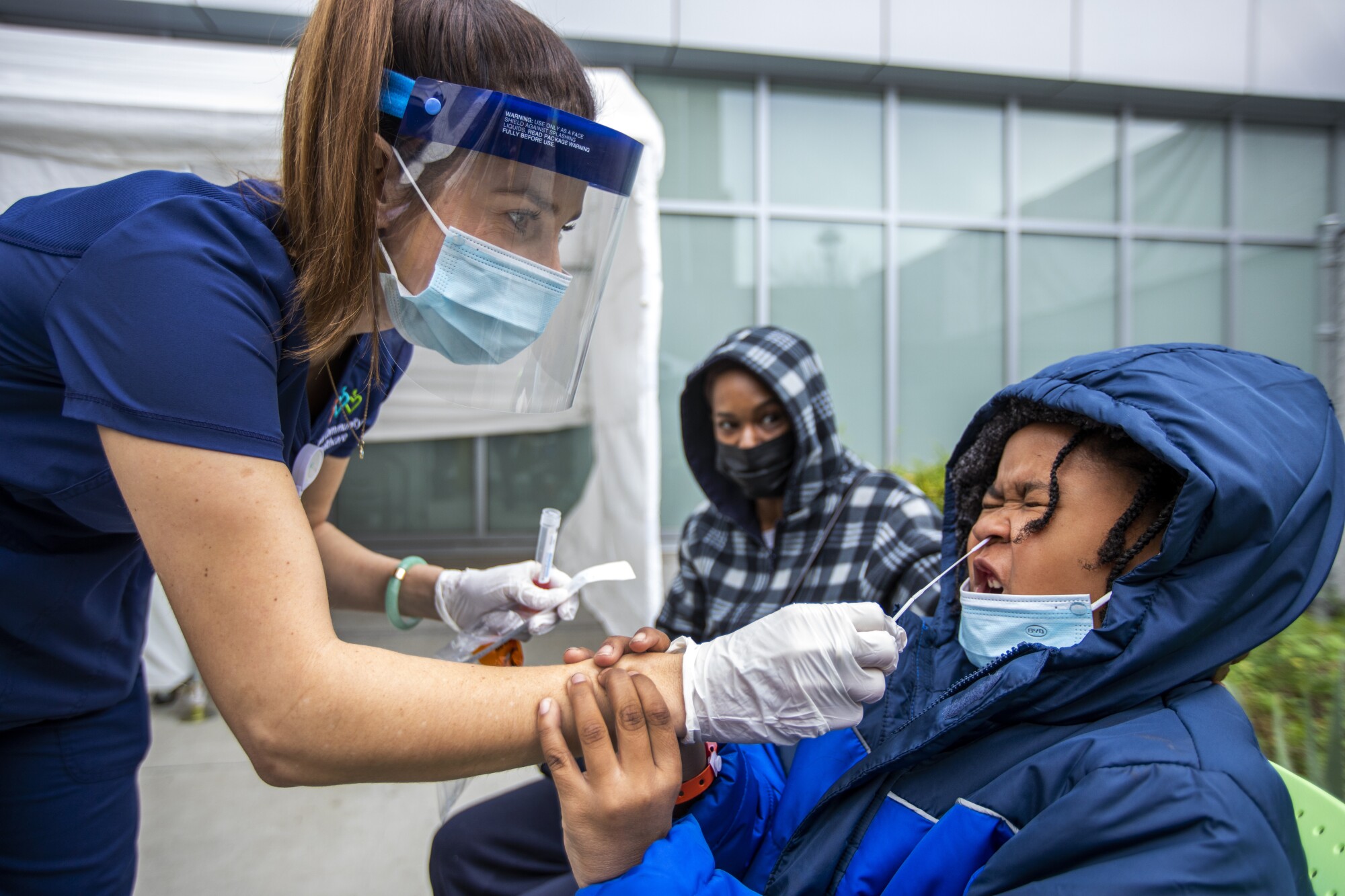
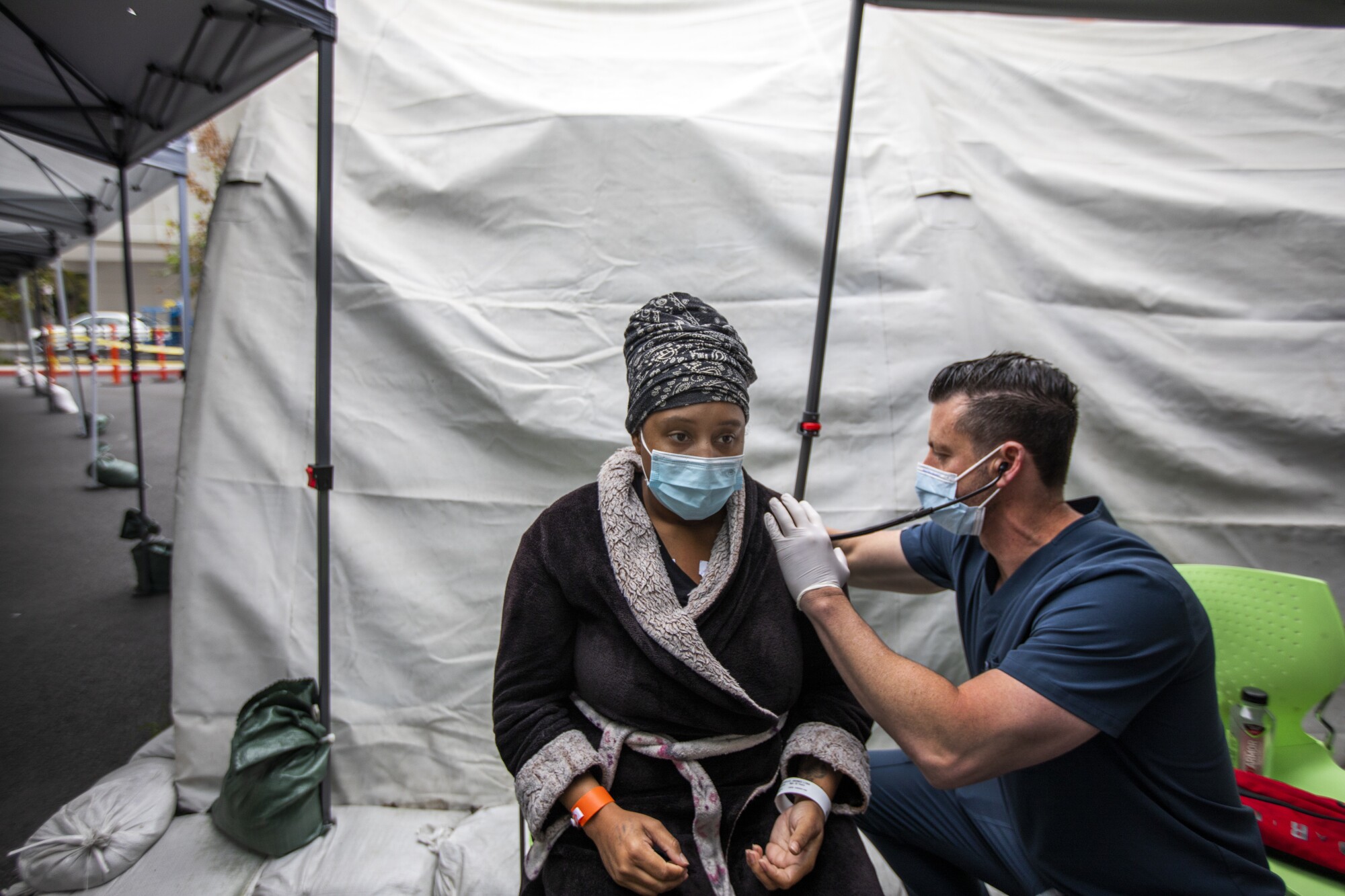
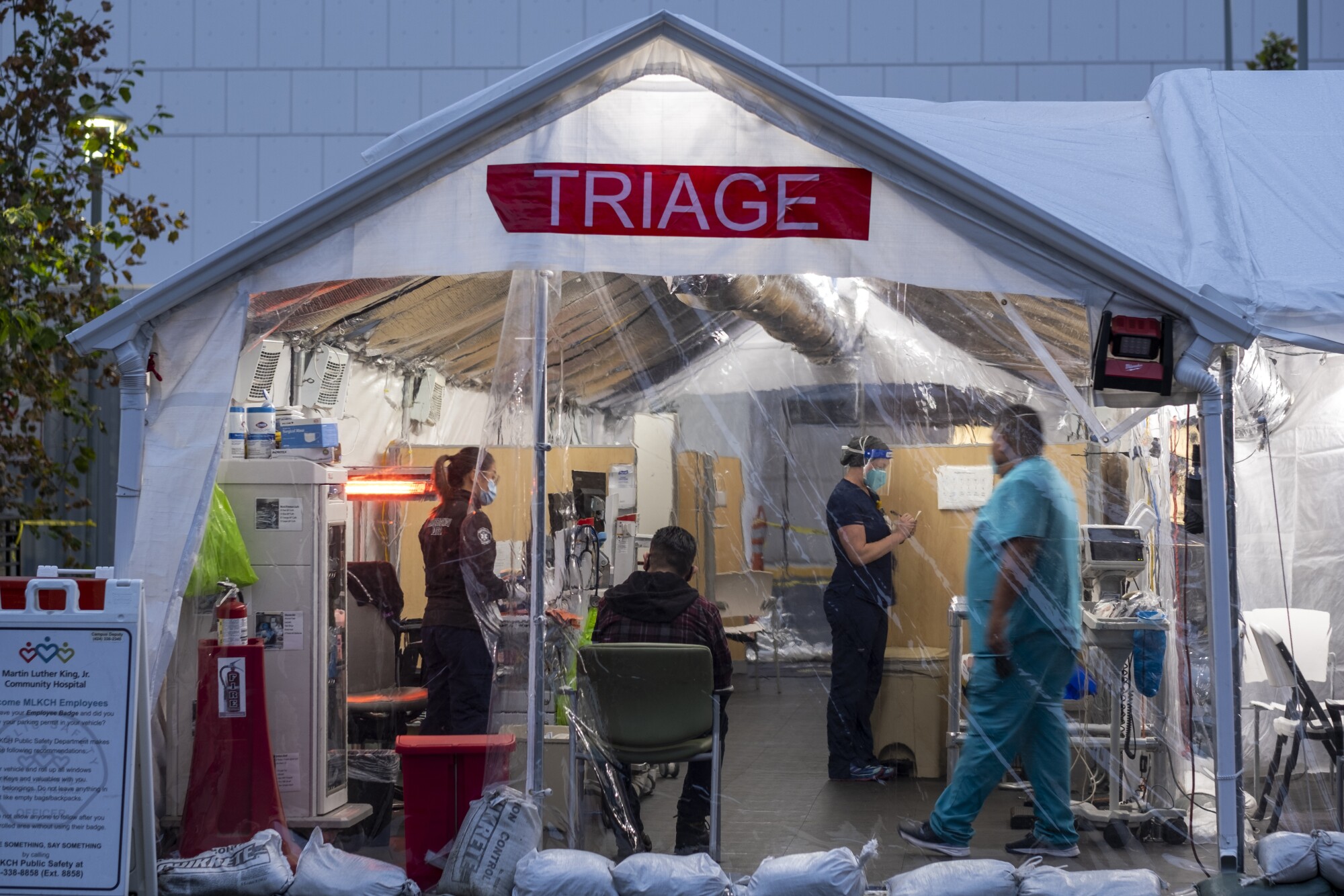
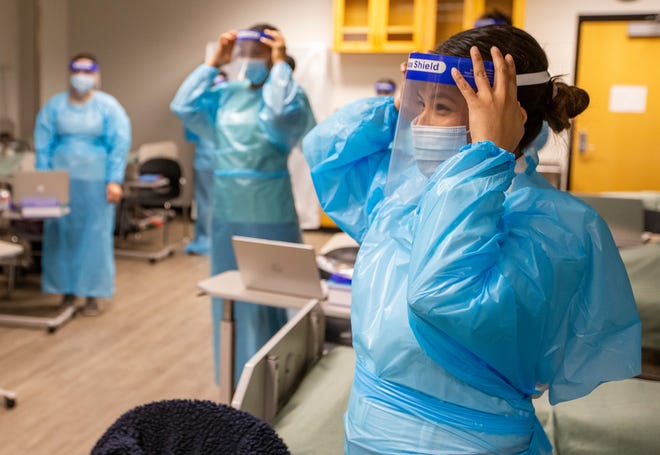 Two years ago, as phrases such as “social distancing” and “flattening the curve” became more common, the healthcare industry worked at breakneck speed to increase capacity. Overflow units were established in schools, parking lots and convention centers as doctors and nurses prepared for the spread of a new virus – COVID-19. Today, as a new, […]]]>
Two years ago, as phrases such as “social distancing” and “flattening the curve” became more common, the healthcare industry worked at breakneck speed to increase capacity. Overflow units were established in schools, parking lots and convention centers as doctors and nurses prepared for the spread of a new virus – COVID-19. Today, as a new, […]]]>

 Community Health Services to offer COVID testing, appointment required FREMONT – On Friday, Community Health Services will offer drive-thru COVID-19 testing at their main office at 2221 Hayes Ave., from 1 p.m. to 3 p.m. Clients must have an appointment to be tested. Registration must be completed online by going to the Community Health Services […]]]>
Community Health Services to offer COVID testing, appointment required FREMONT – On Friday, Community Health Services will offer drive-thru COVID-19 testing at their main office at 2221 Hayes Ave., from 1 p.m. to 3 p.m. Clients must have an appointment to be tested. Registration must be completed online by going to the Community Health Services […]]]>